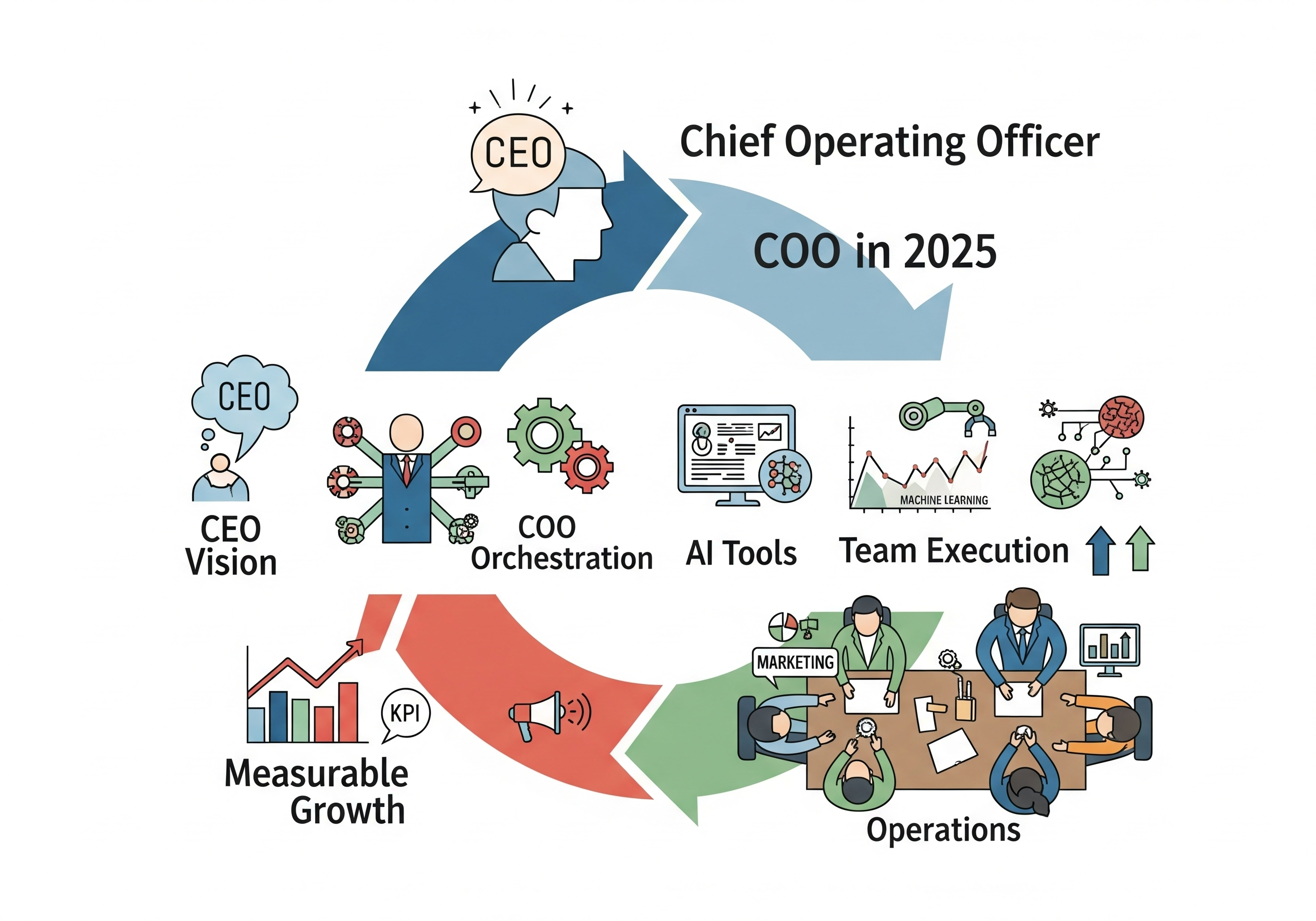The Chief Operating Officer (COO) has always been the engine behind organizational efficiency and execution. But in 2025, the role is transforming—no longer limited to traditional operations, COOs are becoming strategic growth partners, leveraging AI to orchestrate teams, streamline workflows, and make smarter, faster decisions.
Here’s what defines the modern COO—and how AI is reshaping the role.
1) From operational backbone to growth architect
Traditionally, COOs focused on internal processes: supply chains, HR, finance alignment. In 2025, they are expected to connect operations with growth strategies, ensuring execution is as agile as the market demands.
- Align cross-functional teams around shared OKRs.
- Integrate customer feedback loops directly into operations.
- Build scalable frameworks that balance efficiency with innovation.
2) AI as the COO’s productivity multiplier
AI tools are now embedded across every layer of operations. For COOs, the opportunity is to deploy and govern AI responsibly, ensuring teams work smarter, not harder.
AI use cases in 2025 operations:
- Decision Intelligence: AI-powered dashboards surface predictive insights for resource allocation, hiring, and budget planning.
- Process Automation: Repetitive workflows (invoicing, reporting, scheduling) handled by AI agents, freeing teams for strategic tasks.
- People Ops: AI copilots assist in performance reviews, training personalization, and workforce planning.
- Marketing Ops: AI automates campaign performance checks, content briefs, and KPI reporting.
3) Productivity through orchestration, not overload
The COO is the one ensuring AI doesn’t overwhelm teams but instead orchestrates a system of human + machine collaboration. That means:
- Setting AI guardrails (ethics, compliance, data governance).
- Creating standard operating procedures (SOPs) that integrate AI into daily routines.
- Measuring productivity by impact delivered, not hours worked.
4) The COO as a “translator” between CEO vision and team execution
In 2025, COOs increasingly act as translators of strategy into execution. CEOs set the vision, while COOs:
- Break it down into measurable objectives.
- Use AI-powered scenario modeling to forecast outcomes.
- Ensure cross-department alignment, avoiding silos.
This makes the COO central to achieving long-term growth.
5) Skills every COO needs in 2025
To thrive in this AI-driven landscape, COOs need to sharpen:
- AI Literacy: Understanding which tools add value, and which create noise.
- Change Management: Guiding teams through AI adoption without resistance.
- Data-Driven Leadership: Making decisions based on predictive models, not gut instinct.
- Strategic Storytelling: Communicating results and insights to boards and investors with clarity.
Final Takeaway
In 2025, the COO is no longer just an operator—they are a chief enabler of growth, harnessing AI to maximize productivity, align teams, and scale impact. Companies that empower their COOs with the right AI frameworks and decision-making authority will be the ones that thrive in the decade ahead.
